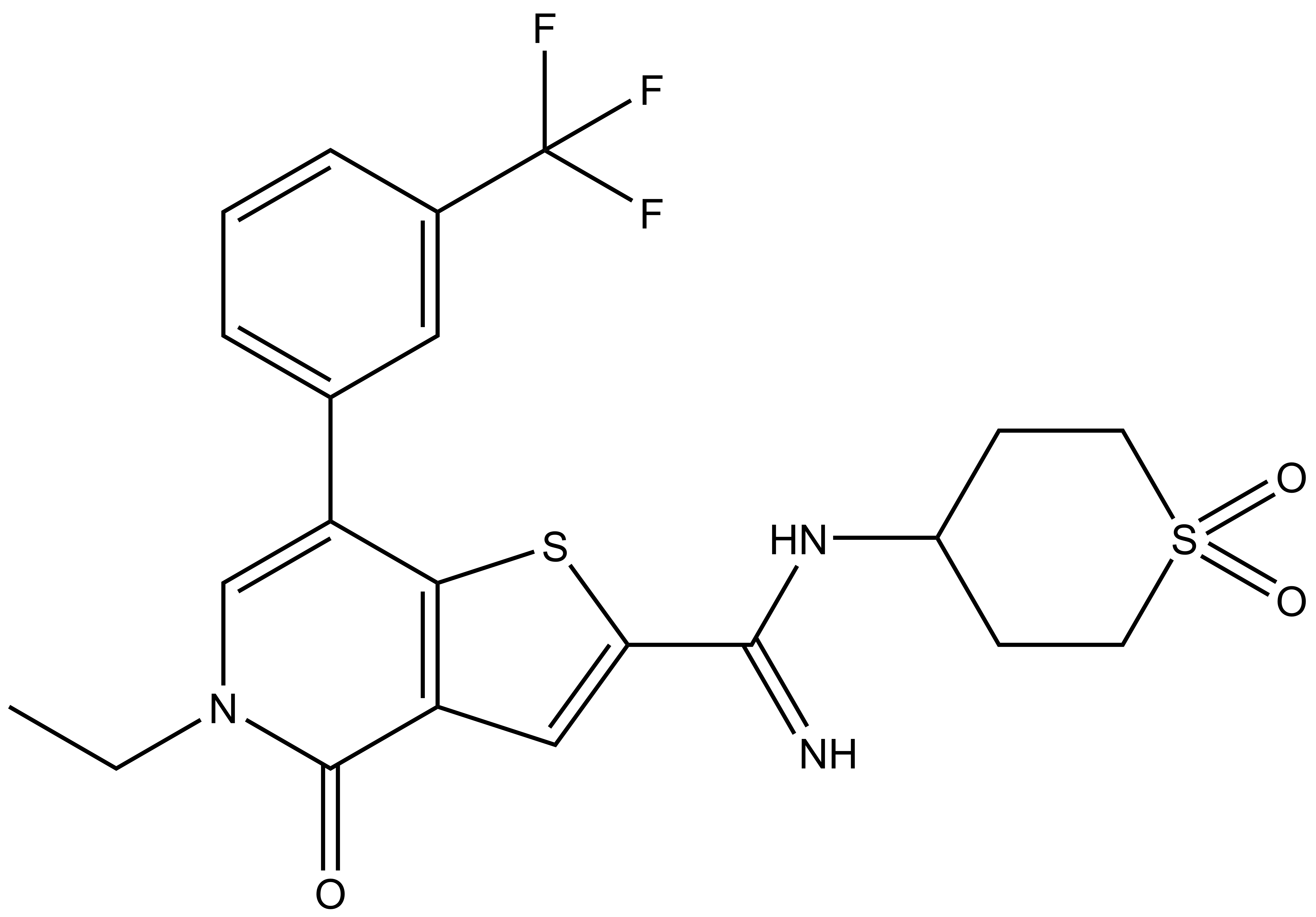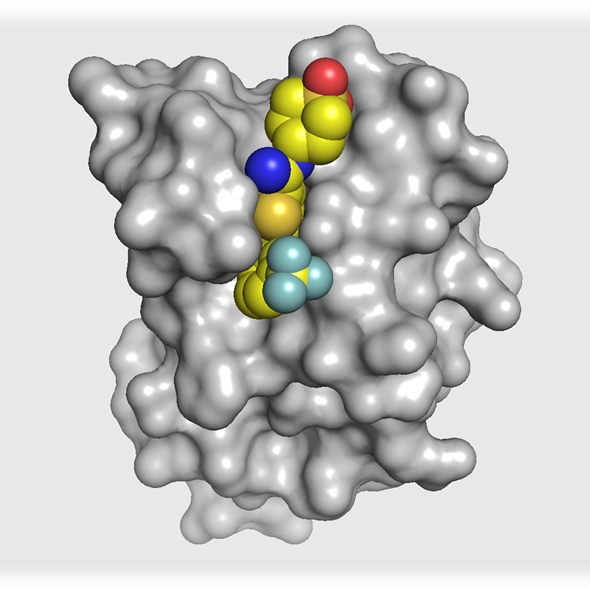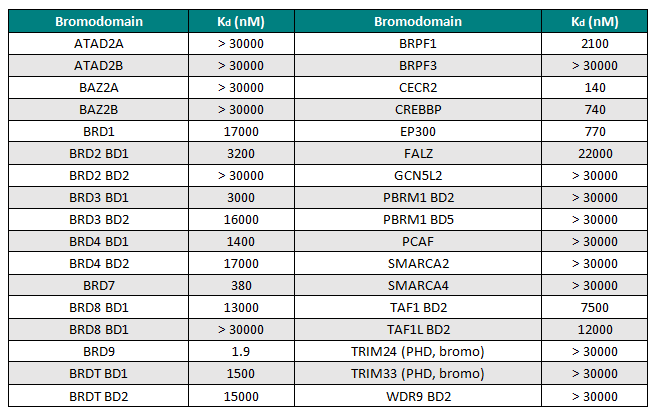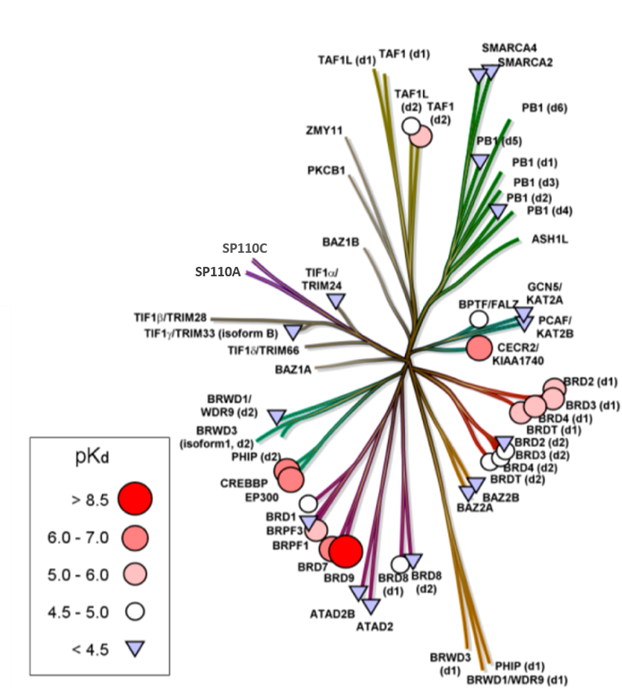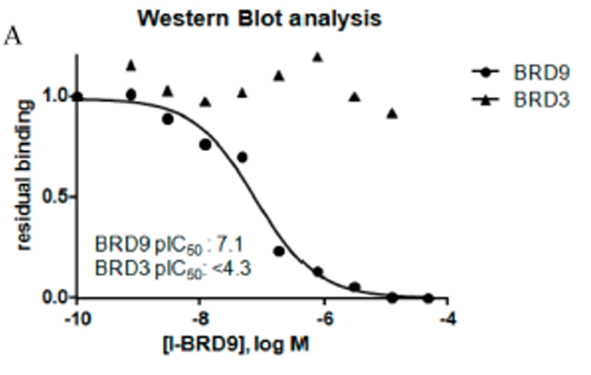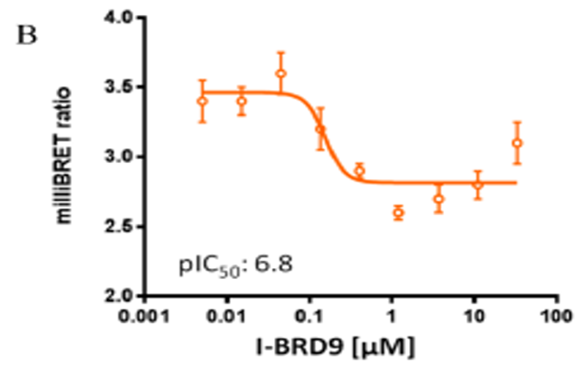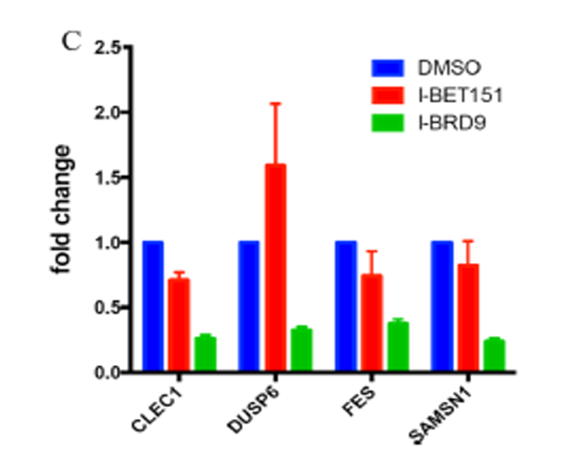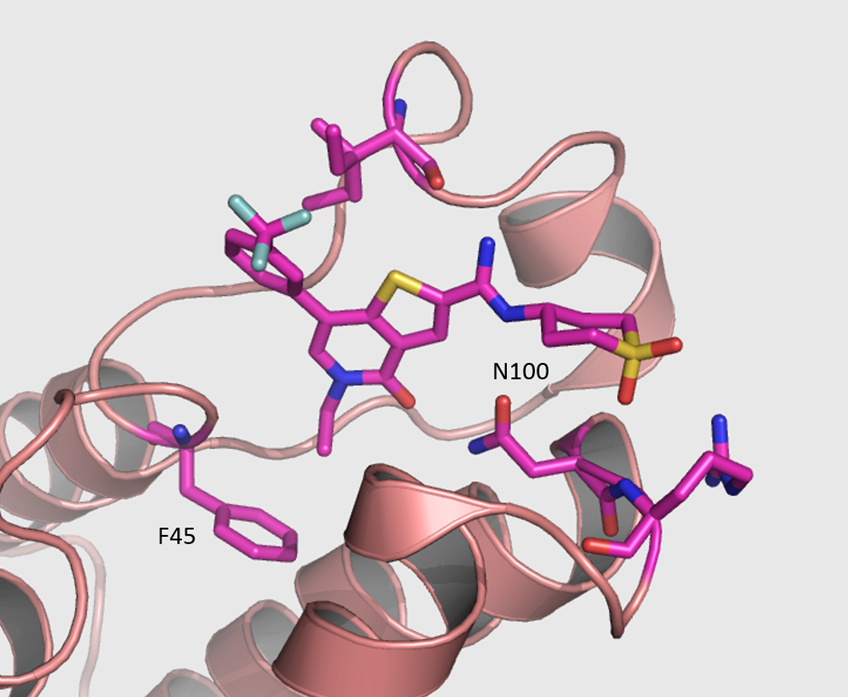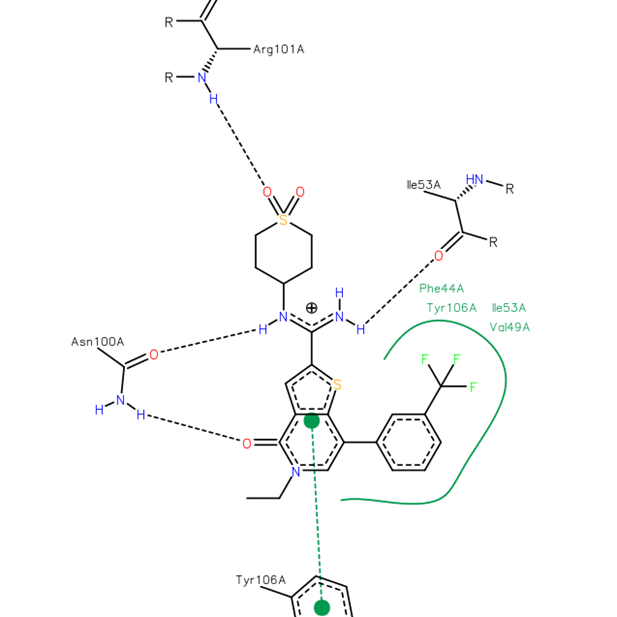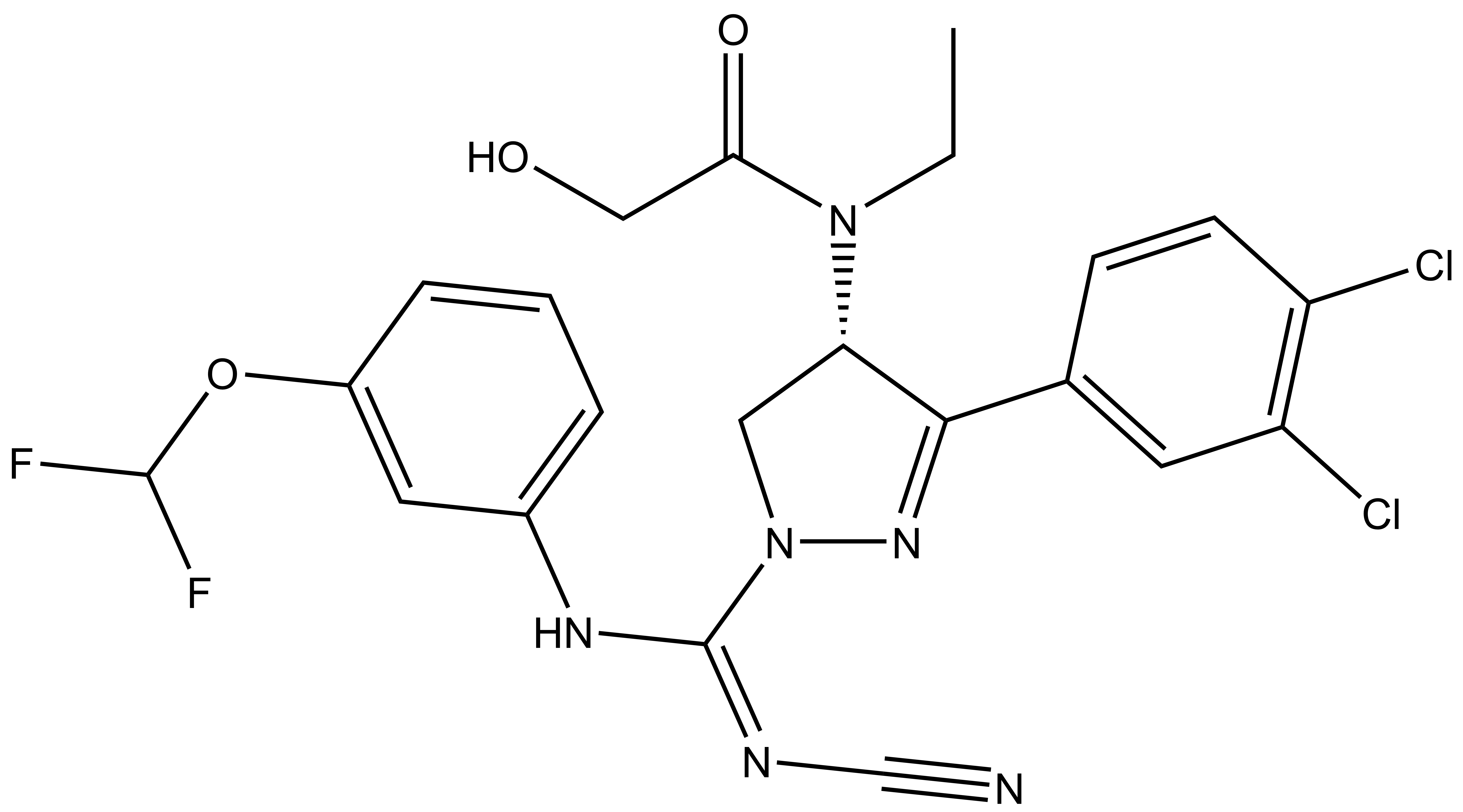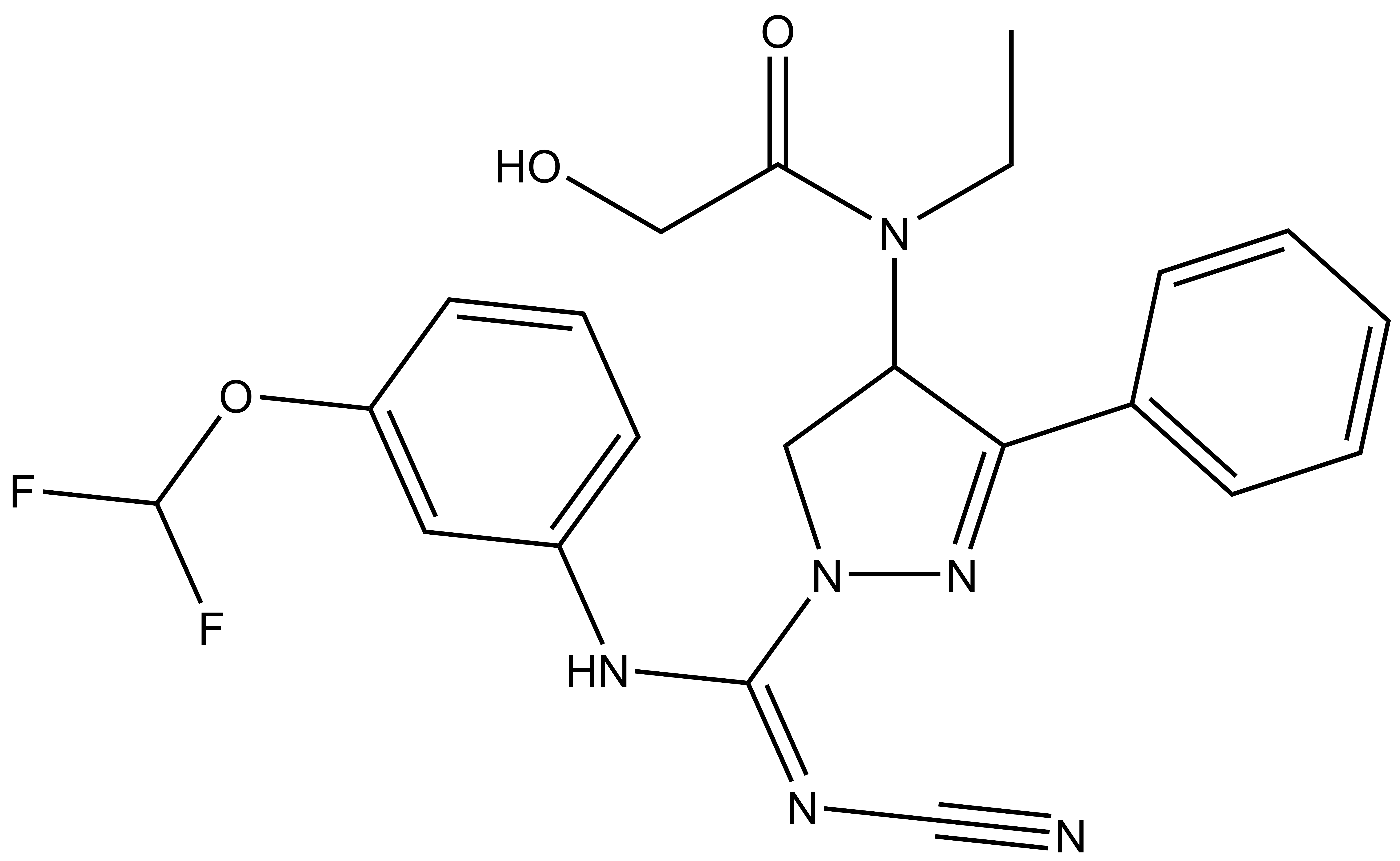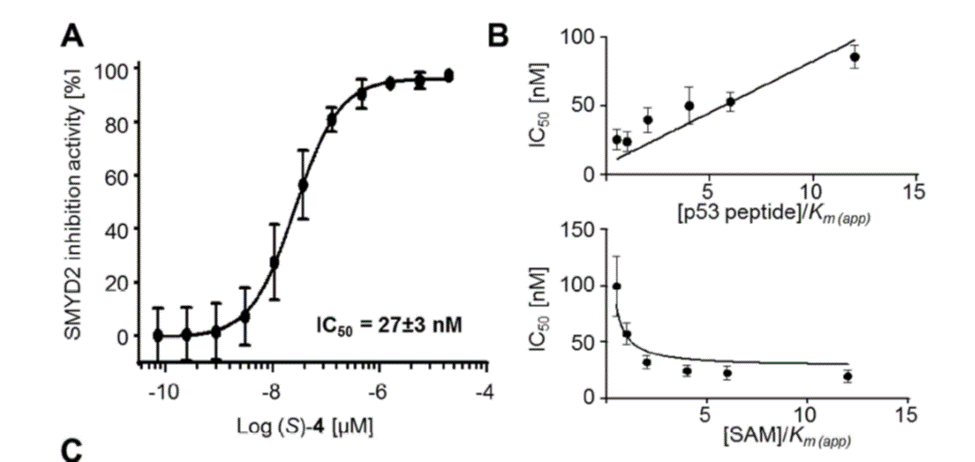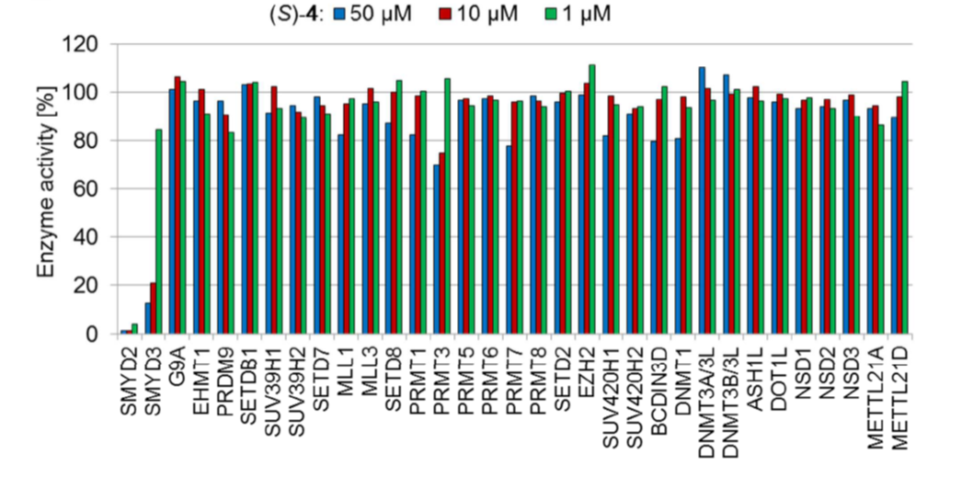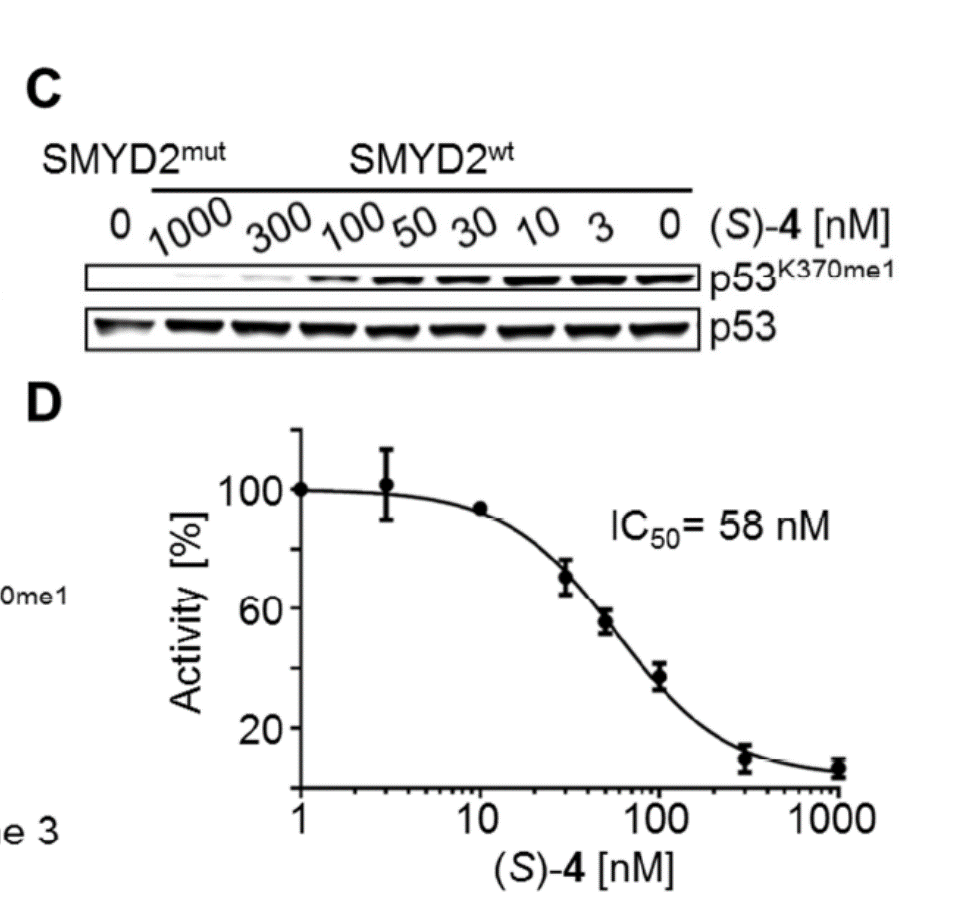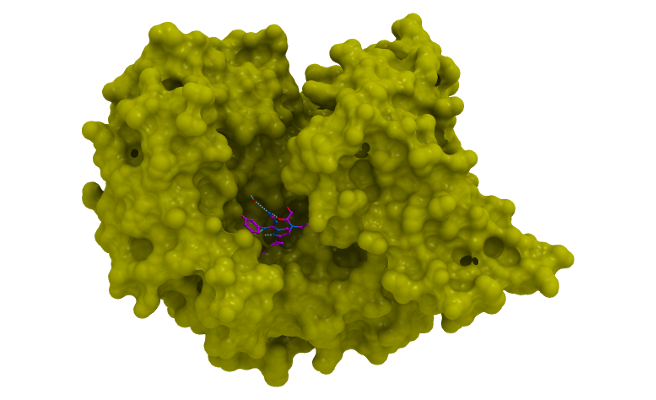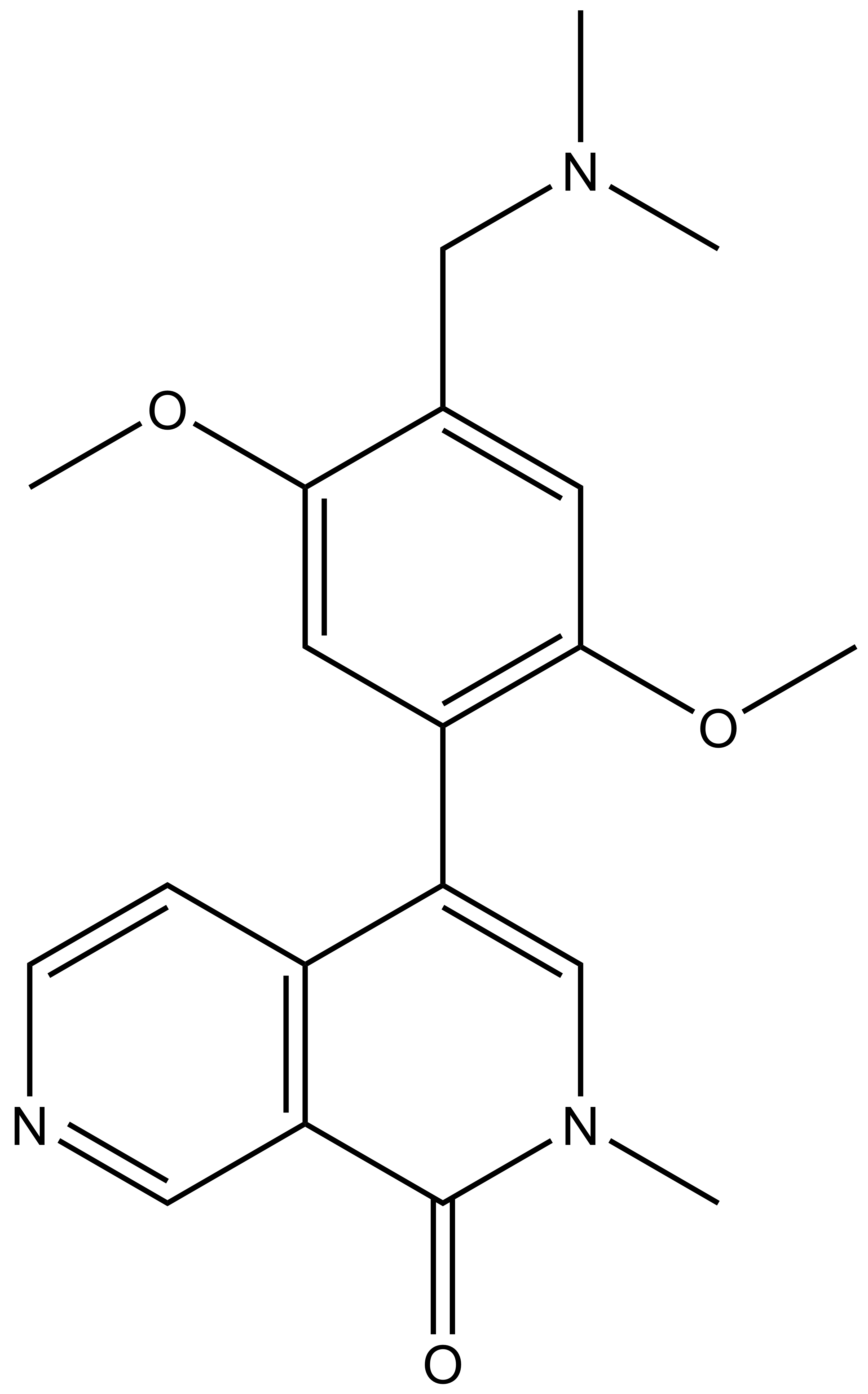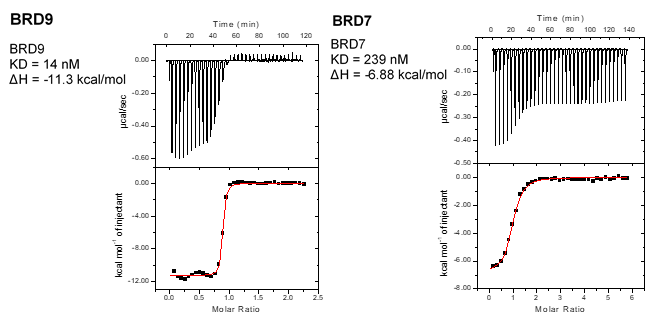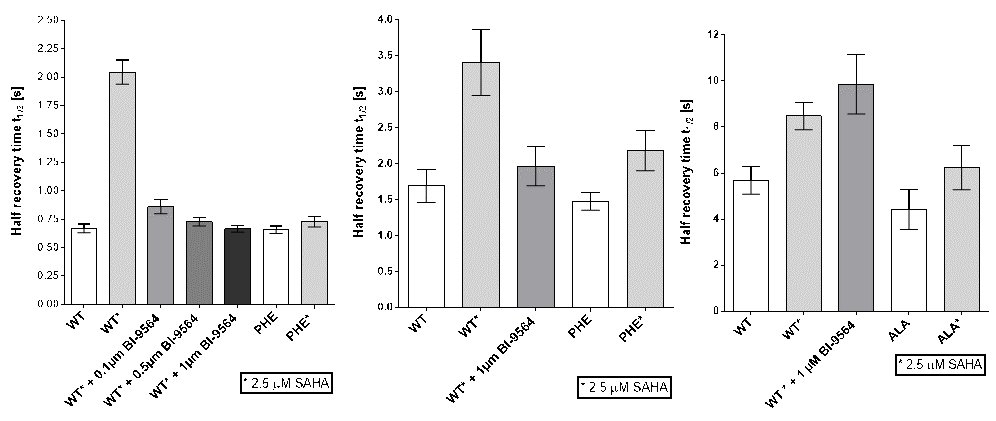| Probe |
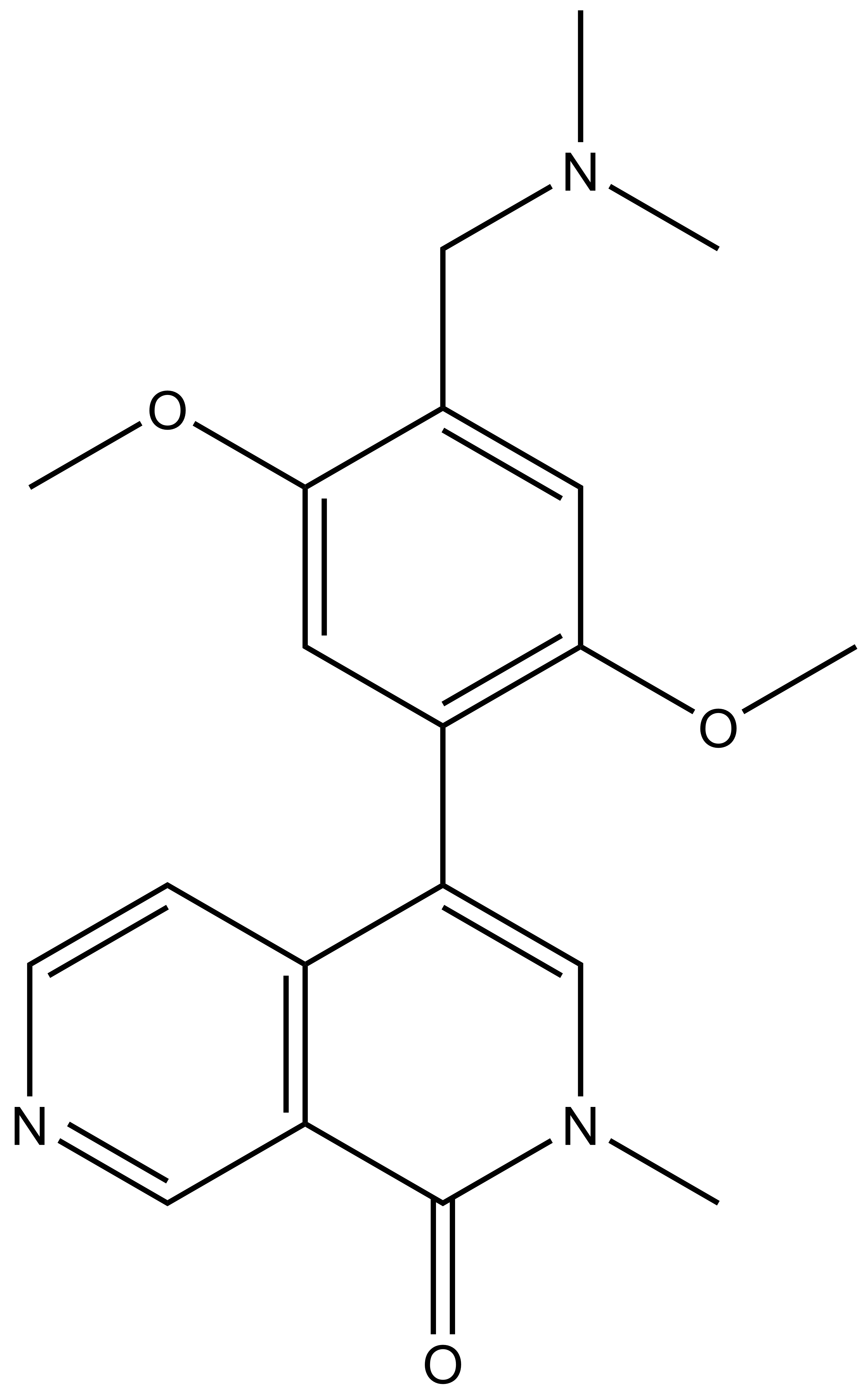 |
BI-9564 |
Biology of Probe and Target
BRD7 and BRD9 are related bromodomain-containing proteins that form a small sub-branch of the bromodomain family tree (1). Human BRD9 contains a single bromodomain and has five isoforms that are produced by alternative splicing. Little is known about BRD9 function; BRD7 has been reported to act both as coactivator, for example for some p53 target genes and as corepressor, negatively regulating the GSK3B phosphotransferase activity. Both proteins have been implicated in chromatin remodelling as part of the SWI/SNF complex. BRD7 has been described as transcriptional corepressor that down-regulates the expression of target genes. Its binding to promoters also leads to increased histone H3 acetylation at 'Lys-9' (H3K9ac).
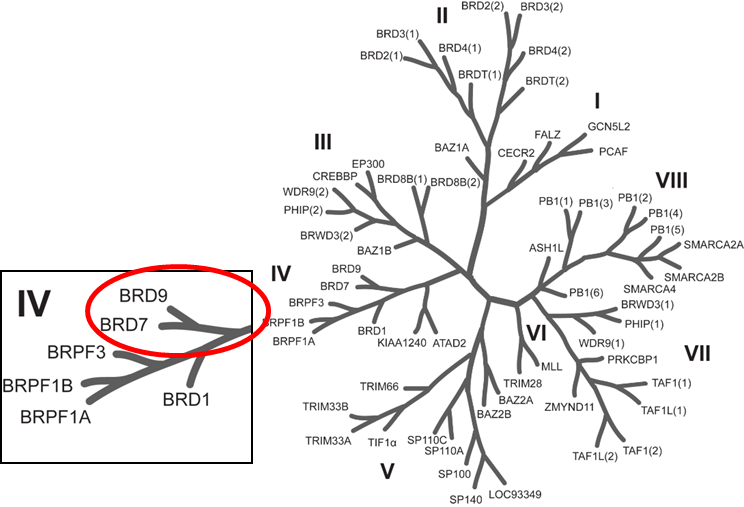
Phylogenetic tree of bromodomains and detailed view at the sub-branch of related bromodomain-containing proteins BRD7/9.
BI-9564 is a BRD9/7 specific inhibitor that has been developed in collaboration with Boehringer-Ingelheim. This probe was discovered through fragment-based screening and optimized by structure guided design.
BI-9564 binds to BRD9 with a higher potency (KD of 14 nM) than to BRD7 (KD of 239nM) as determined ITC, with CECR2 as the only off-target in vitro. BI-9564 is >30-fold selective against other non-Class IV bromodomains and negative against BET family members. BI-9564 does not significantly affect 324 kinases. BI-9564 is highly potent in cells and shows anti-proliferative activity in particular cell type.
Potency
BI-9564 binds to BRD9 with a higher affinity (KD of 14 nM, ITC) than to BRD7 (KD of 239nM, ITC), is completely negative on BET family members (>100 µM by alpha screen) and demonstrates cellular activity by FRAP on BRD9 and BRD7 at 0.1 µM and 1 µM, respectively.
| BRD | Kd/nM (ITC) | IC50/nM (Alpha Screen) |
| BRD7 | 239 | 3410 |
| BRD9 | 14 | 75 |
| CECR2 | 258 | NT |
(NT = Not Tested)
Selectivity
Alpha screen confirmed BI-9564 as a potent inhibitor of BRD9 (IC50 of 75 nM). BI-9564 is very selective against other non-Class IV bromodomains, including the BETs. The only off-target effect was determined against CECR2 (18-fold selective), but not in cells (at 1 µM, FRAP). BI-9564 shows no significant off-target pharmacology against a panel of 324 kinases at concentrations less than 5 µM and is functionally active in cellular assays.
Cellular Activity
FRAP assay demonstrate that BI-9564 is able to disrupt the binding of BRD7 and BRD9 to chromatin in cells at 1 µM and 0.1 µM, respectively. BI-9564 shows no cellular inhibition of CECR2 at 1 µM.
In vitro Activity
In a broad cancer cell line panel treatment with BI-9564 resulted in selective growth inhibition of EOL-1 AML cells both in vitro (EC50 = 800 nM) and in a disseminated mouse model of AML (180 mg/kg/day).

